|
The World's Finest Presents 
THE WORLD'S FINEST MAIN PAGE · SITE SPECIALS · EDITORIALS · FORUM
The Usual Suspects: The Possible Return of Batman: The Animated Series, Part 3
By Joseph Davis
In previous essays discussing the possible return of Batman: The Animated Series on HBO Max, I talked about the potential positive outcomes of its return, as well as speculation regarding what the show may be like. Now, we can discuss the supporting cast—who they would be, who would be emphasized, and how they would fit into this rebooted world. Please keep in mind that this discussion will not touch on the villains, as they will be the focus of an upcoming essay. And, of course, before I begin, let me reiterate that I have no advanced knowledge of any information or plans regarding the potential show, and that this is merely a thought exercise speculating on what shape such as series might take. Of course, if anybody in a position of power reads these essays and wants to bring me on as a writer and creative consultant, well…who would I be to say no?
In the beginning, the show was Batman: The Animated Series, implying that Batman was the central focus. He was a solo act, occasionally accompanied by Robin, when the story demanded it, and supported by butler Alfred and Commissioner Gordon, of the Gotham City Police Department (GCPD). However, by series end, a Fox mandate required that Robin appear in every episode, to the point where the show was renamed The Adventures of Batman and Robin. This was compounded when the show moved to Kids’ WB!, where they required more sidekicks in the form of Nightwing (formerly Robin), Batgirl, and a new, younger Robin (early production materials implied that The Creeper was initially considered as a fourth). For a BTAS reboot to truly reflect the original Batman: The Animated Series, I would argue that the herd of sidekicks needs to be thinned out and the focus brought back to Batman, the GCPD, the Rogues’ Gallery, and the occasional guest star. Of course, before we discuss the supporting cast, we should say a few things about the leading man…

Batman
Honestly, I wouldn’t change too much about Batman himself, as this incarnation has proven to be a solid character over the past thirty years. Obviously, after years in this role, he knows that—on some level—what he does works, and he continually seeks out new and better ways to do it. By day, he’s Bruce Wayne, a man who still furnishes Gotham City with needed industry and jobs, and he provides for the impoverished through the Wayne Foundation. However, by night…well, you get the idea. At this stage, there’s no reason for him to be angsty or to agonize over his role—he got most of those anxieties out in the original BTAS days. After all, as writer Grant Morrison said of the character in Batman: Arkham Asylum 15th Anniversary Edition (2004):
[I]n the end, I figured that anyone who had gone so far and been so successful in his quest to avenge his parents’ death and to help other people would have ended up pretty much straightened out. Bruce Wayne would only have become conflicted and mentally unstable if he had not put on a scary bat-suit and found the perfect outlet for his feelings of rage, guilt, and revenge.
This is not to say, however, that there isn’t room for improvement. I’d like to think that there’s just enough anxiety there to keep him from getting complacent. Every night he goes out he acquires new information, allowing him to continually evolve and adapt his methods. I’d rather not see Batman portrayed as out of touch with the people in his city (as he was accused in 2020’s Joker War storyline) or a Batman who derives pleasure in beating up his enemies (as he admitted in the 2017 Elseworlds Batman: White Knight miniseries). I would rather see him in a matter consistent with his portrayal in previous series. In this reboot, I see this incarnation of Batman as one who’s still at the peak of his career—he hasn’t yet hit the decline prophesized in Batman Beyond and JLU’s “Epilogue.”
(Some might criticize this approach as reducing Batman to a static character, but please bear in mind that the best episodes of the series often featured the villains as the protagonists [“Heart of Ice,” “Mad as a Hatter,” “If You’re So Smart, Why Aren’t You Rich?”, “Harley and Ivy,” etc.]. In these episodes, Batman is presented as a force of nature, delivering divine—but compassionate—justice to those who seek to upset the natural order.)
Obviously, he’s still with the Justice League. Batman recognizes the need for a Justice League. After all, what is protecting only Gotham City, if the rest of the world falls to ashes? And though he claims that he’s still a “part timer,” the other six original members know that this is just posturing—it allows him to keep his autonomy and loner credibility. In truth, he is the League—after all, he designed and paid for the team’s headquarters, vehicles, and weaponry. To use a MCU comparison, he’s their Tony Stark.
Now, before we move on, a quick aside: much has been said about 2000’s Mark Waid story JLA: Tower of Babel and 2012’s Justice League: Doom, where it was revealed that Batman has contingency plans in place to neutralize any League member just in case they go rogue. Obviously, a large part of those stories dealt with the sense of betrayal felt by the other League members that their buddy Batman would consider such things but, in the context of the DCAU, I think the team would recognize the importance of such strategies. After all, we’ve had scenarios where Darkseid turned a brainwashed Superman against Metropolis (STAS’ “Legacy”), two parallel Earth teams with the same powers as them, both of which invaded our reality (the Justice Lords in Justice League’s “A Better World” and the Crime Syndicate in Justice League: Crisis on Two Earths); and the time that the team got possessed by ancient snake people who sought to destroy the sun (“Eclipsed”), among others. In this context, not only would Batman’s protocols be advisable, but a requirement for all members. And it would be expected that the six original members of the Justice League would have a contingency plan to take Batman down if they needed to.
So that’s Batman. Now, on to the Bat-family…
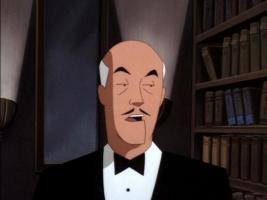
Alfred Pennyworth
Sadly, Efrem Zimbalist, Jr.—the voice of Alfred Pennyworth in the DCAU—passed away in 2014, which leaves us with an uncomfortable question: do we recast the character, or do we retire Alfred, saying that he passed away some time after Justice League’s “Starcrossed,” his final appearance? While the retirement of Alfred could present some story ideas—primarily Bruce Wayne moving on without his father figure—I would argue that his absence would be more harmful to the series. After all, aside from his significance as The Dark Knight’s moral bearing, Alfred is a handy character in regards to narrative exposition—his presence allows Batman to walk the audience through the villain’s plans, Holmes and Watson-style (otherwise, that job goes to a sidekick, who should be trained to see those connections without explanation). And, besides, it just wouldn’t be Wayne Manor without the faithful butler.
My suggestion for the new Alfred? I’ve noticed that Alastair Duncan (who voices Alfred in the upcoming Batman: The Long Halloween animated films) is pretty spot-on.

Nightwing
On Batman: The Animated Series, he was Dick Grayson and Robin, the first Boy Wonder. Voiced by Loren Lester, Bruce’s ward/adopted son was presented here a college student who helped Batman out on weekends and holidays, thus fulfilling the need for a partner without having him on the show every episode (of course, by the end of the series, he was in every episode. Thanks, Fox!). Under his surrogate parents—Bruce and Alfred—he was competent, upbeat, cracked jokes, and was pretty well-adjusted, despite the tragedy of his parent’s deaths at the hands of Tony Zucco. As for his motivation for bringing his ward into the family business, an exchange between Batman and Wonder Woman in “Agendas,” from sister series Young Justice, says it all:
Wonder Woman: [Y]ou indoctrinated Robin into crime-fighting at the ripe old age of nine.
Batman: Robin needed to help bring the men who murdered his family to justice.
Wonder Woman: So he could turn out like you?
Batman: So that he wouldn’t.
By the end of the BTAS era—specifically Batman & Mr. Freeze: Sub Zero (1998) and a flashback in the TNBA episode “Old Wounds” (1998)—we learn that Dick Grayson was also in a developing, but serious, relationship with Barbara Gordon (who was actually Batgirl, though neither knew the other’s identity at first). In fact, in “Wounds” it’s heavily implied that he was planning on proposing to her, but a bungled introduction to his alter ego by Wayne caused a rift leading to Grayson skipping town, leaving Gordon as Batman’s new protégé.
Fast forward two years or so, to the events of The New Batman Adventures, where Grayson returned to Gotham City as Nightwing, only to find that Batman and Batgirl have formed a new partnership, and that Bruce has taken in Tim Drake as his new ward…and as the second Robin. Why he chose to return to Gotham City, when he had the money to set up shop anywhere else in the world, is rather telling. It implies that, even after the unpleasantness of “Wounds” (and the concurrent 1997 miniseries The Batman Adventures: The Lost Years), that he still felt that he had something to prove, both to Bruce and to Barbara.
Regarding Batman / Bruce Wayne, Grayson wanted to prove that he was every bit the effective crimefighter as Nightwing to his father figure. Both “Wounds” and The Lost Years show examples of a growing rift between the Dynamic Duo, with Robin questioning Batman’s choices and strategies. It is the classic story of young person struggling with the weight of his parent’s expectations, and then moving on to forge their own path. And while Dick also wanted to prove that to Barbara, there was another element that must be considered: his unrequited feelings for her.
In Batman Beyond, the older Barbara Gordon dismissed their relationship as “puppy love” and, to her credit, it did end with her boyfriend punching his father in the face and disappearing for two years “to find himself.” And, when he did return, with a new black outfit and grimdark demeanor, they bickered with each other a lot, both in and out of costume. Hell, in “You Scratch My Back,” he used a feigned team-up with Catwoman in an attempt to make her jealous. Now, Dick Grayson is perceptive—it’s a family trait—he may know that Barbara had harbored a crush for Batman in the BTAS days, and he must see how she looked at him during team-ups. He may suspect an attraction, however one-sided it may be (at the moment) and, as a reaction, he was mimicking Batman’s mannerisms to subconsciously prove to her that he could be just as cool as her crush (to quote Negaduck in the Ducktales reboot: “They want grim and gritty, huh? Happy to play the part.”). However, it didn’t work, and by the time of JLU it was implied that he had relocated to the nearby city of Bludhaven, but it’s still only a short drive from Gotham. By DCAU’s end, despite his claims that he wanted to be his “own man” in “Wounds,” he was still trying to prove himself to a father he’d never be like, and an ex that didn’t want him back.
My suggestion for a BTAS reboot? He grew up and moved on.
Dick Grayson will never be Batman and, in truth, Wayne never wanted him to be. He just doesn’t have the darkness that his father has (it’s a testament to Wayne’s skill as a parent). And, as for Barbara, a gentleman knows when to cut his losses and accept that the past is passed. Whatever they had in college is over, and only a fool would press further. Now, I am hardly an expert in love, but I believe—if your feelings are genuine and strong enough—that you get one chance to win back an ex-lover. However, if they decline, it’s over. Anything after that becomes harassment. So, after settling his affairs with Bruce and Barbara, an unburdened Grayson leaves Gotham City for greener pastures. And a building shaped like a “T.”
I propose that, in this hypothetical reboot, Nightwing moves to Jump City (or San Francisco, or wherever) and founds the Teen Titans, with the intent of using it as a means to train the next generation of superheroes.
Consider: according to the late Dwayne McDuffie, on his now-defunct message boards, there was an “18 and older” requirement to being in the Justice League. On Unlimited, Supergirl was twenty, so she was a member, but Stargirl was not, and had to be accompanied by her stepfather (and League member) S.T.R.I.P.E. (it’s implied in “Clash” that nobody knew Captain Marvel was the underaged Billy Batson, but by the time they knew, he had quit). If that is the case, then what happens to underaged, yet power-endowed, individuals? Are they on their own until they’re eighteen, just waiting for opportunistic villains and government agencies to snatch them up and use them as living weapons? The only episode in the DCAU that attempted to recognize this was the half-baked STAS episode “Where There’s Smoke,” with an organization (most likely fronted by Project: Cadmus) that reached out to mutant children. Perhaps Bruce and Dick recognized this as a problem, and they set up a means to protect them.
In the DCAU, perhaps the Teen Titans are an X-Men-like organization, one that provides not only an education to superpowered individuals, but also training and support. This could also be facilitated by the Teen Titans team, as new heroes are given on-the-ground training by seasoned vets. Does this sound like Young Justice? Well, yeah, but it’s still a good idea, and Dick Grayson—either as himself or under an assumed identity—could be head of the organization, with Nightwing as field commander.
(Some may question whether Dick Grayson is qualified to be an educator. Remember that we were never told what Grayson’s degree from Gotham State was in. A simple retcon could give him a bachelor’s degree in education. Add a couple of years for a master’s degree, and Grayson—flanked by other qualified educators and a grant from the Wayne Foundation—could certainly front such an organization. A certified Grayson, combined with his years of training under The Dark Knight himself, would be uniquely qualified for such an endeavor.)
As for the Teen Titans team, I would use the usual suspects—Cyborg, Starfire, Raven, and Beast Boy (voiced by their Teen Titans counterparts, of course)—along with Miss Martian, Static and maybe a few others (The Flash could make an appearance here as a League liason). Freed from the drama in Gotham City, I think Grayson would be happy, perhaps more like his BTAS self, before he tried acting as dark as Batman. Bonus points if he’s in a committed relationship with an age-appropriate Starfire. Also, having Grayson back “at school” would limit his appearances on the reboot, save for one or two episodes.
In “Old Wounds,” he talked about how he wanted to become his “own man.” Let’s see him do it.
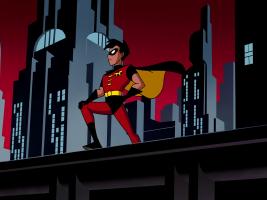 Robin
Robin
In fact, let’s get rid of two birds with one stone. In my eyes, the second Boy Wonder would be another of Grayson’s students, training with the Titans (as implied in the Static Shock episode “Hard as Nails”). This would significantly declutter the Batcave, cutting the number of sidekicks in half (if you consider Alfred a sidekick, of course). This does not, of course, mean that Bruce Wayne is out of his second son’s life—as a billionaire, Drake is always a private airfield away from seeing his father, but this eliminates the necessity of having to see him every week. This could also be where he gets his start in telecommunications engineering, and perhaps he could be voiced by Teen Titans veteran Scott Menville.
Finally, of course, this takes place before the events of Batman Beyond: Return of the Joker. It would be nice to give Robin a few good years before it all goes to hell.
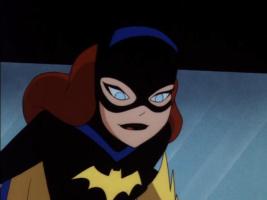
Batgirl
Not much to say here, save that she’ll be the focus of the next essay. To be continued…
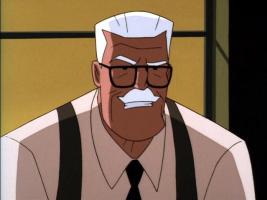 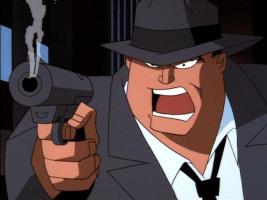 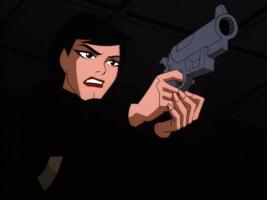
The Gotham City Police
With the sidekick issue dealt with, we can move on to the issue of the Gotham City Police Department, home to three major supporting cast members and a wealth of potential story ideas. For the majority of the DCAU, Batman has had a relatively easy relationship with the police department, aside from “On Leather Wings” and Batman: Mask of the Phantasm, both stories where Harvey Bullock wrongly led a SWAT team after the Dark Knight instead of the doppelgänger who actually committed the crimes in question. In fact, after watching a good chunk of BTAS, it’s very obvious that the GCPD openly endorses costumed vigilantes—the Bat-Signal is proof of that—and it could be argued that Gordon’s willingness to work with them is what inspired other cities to do the same, allowing for Superman in Metropolis, the Flash in Central City, etc. But what happens when the system breaks down?
One noticeable thing about the Gotham Police in the DCAU is a lack of police corruption. There have been hints of it, of course—false accusations in the BTAS episodes “P.O.V.” and “Vendetta,” as well as Terry McGinnis’ accusations in Batman Beyond—but no actual corrupt cops. In fact, the only instance in the DCAU of police corruption came from STAS, with Detective Bowman (“Target,” “The Late Mr. Kent”), and he got the death penalty. I suspect that both the Fox and WB! networks wanted to avoid such storytelling in children’s programming—they wanted to reinforce the idea that the police are there to help with impressionable children. However, in our hypothetical reboot on a streaming service, this series cannot ignore twenty years of headlines involving corruption and police brutality.
I think that a BTAS reboot would be great place to utilize these stories. Consider: when a surrendering costumed villain approaches a GCPD cop, do they panic and open fire? Do the police give a supervillain a “rough ride” to the precinct? Hell, considering how the GCPD openly endorses vigilantism, what if there’s a group of cops on the force who embraces Batman’s ability to beat up criminals? Do they have Bat-symbol stickers on their police cars, much like real-life cops have appropriated the skull symbol representing Marvel Comics’ Punisher? For that matter, what would Batman do if confronted by a racist cop attacking an African American? Would Batman take that officer down to save a life? Who would Gordon side with? And how would the city (and the police) respond if he sided with Batman? These are all topics that a BTAS reboot, freed from the confines of children’s programming, could address.
In addition to these “torn from today’s headlines” materials, the GCPD is also an excellent opportunity to pad the supporting cast. The transition from BTAS to TNBA lessened the presence of mainstays like Commissioner James Gordon (voiced by the late Bob Hastings) and Detective Harvey Bullock (voiced by Robert Costanzo), as they were reduced to mere set dressing. Another significant figure worthy of attention is Detective Renee Montoya, voiced by Ingrid Oliu (BTAS) and Liane Schirmer (post-65 BTAS, TNBA), a figure who began on the animated series, but found new life as a supporting character in the comic books. Her presence in the BTAS reboot would be considerable, as she would provide positive representation for the Hispanic and LGBTQA+ communities. And it wouldn’t have to stop there. The GCPD could provide an opportunity to introduce a number of new supporting cast members—officers and detectives, rookies and veterans, pure and corrupt—using the 2002-2006 series Gotham Central as a template.
For both of these reasons, I propose that the BTAS reboot should bring back the Gotham City police in a big way. Also, on a final note, considering how long the series has run, it might be interesting to see how Gordon, Bullock, and the other cops react to Batman now that he’s in the Justice League. Would they be in awe of him, or would they see him as nothing special? Would younger cops, who have seen him with the Justice League, look at Batman differently that veterans who knew Batman when he was just getting started? Would Bullock bust his chops for “dropping by after saving the universe” to solve a local murder? Things to consider.
 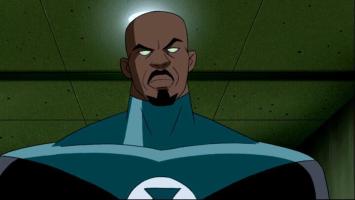
Guest Stars
Again, while not wanting to turn the series into Batman: The Brave and the Bold II, Electric Boogaloo, it would be a shame to waste the opportunity to check in with the Justice League and see what they’re up to from time to time. The most obvious choice would be Wonder Woman, allowing them to continue their ongoing flirtation, but my personal choice would be Green Lantern, owing largely to the cafeteria scene in the JLU episode “The Once and Future Thing.” Unlike the semi-hostile relationship with Hal Jordan or Guy Gardner in the comics, in that scene he actually interacts with John Stewart casually as a friend, with a comfort level he’s only shown with Alfred and Dick Grayson in the Batcave.
Personally, I’d like to see more of that relationship, perhaps in an adaption of Geoff John’s 2007 storyline The Sinestro Corps War, where the Green Lantern enemy builds his own fear-powered army. This would require, of course, a Yellow Lantern for Sector 2814, which means that Sinestro could extend membership to the Scarecrow…or perhaps to Batman himself.
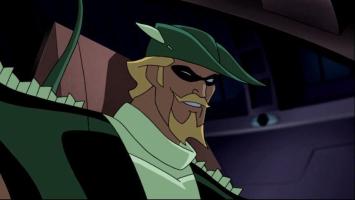 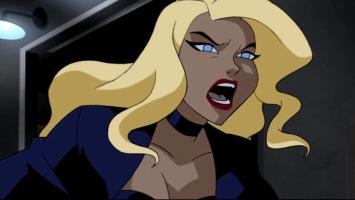 
Other more obvious candidates would include Green Arrow, Black Canary, and The Huntress, especially seeing as how Canary and Huntress are Gotham residents. As for Queen, it wouldn’t be too much of a stretch for a billionaire like him to own a property or two in town so he can be closer to his “pretty bird.” With Barbara Gordon in tow, it wouldn’t take much to bring together the Birds of Prey, perhaps in another episode penned by Gail Simone. And, as for Green Arrow, it would be interesting to see a team-up between Batman and…another Batman (granted, the similarities between the two were explored in Batman: The Brave and The Bold, but it’s a fun pairing nonetheless). Who knows? It could set the stage for a “Batman Incorporated”-inspired storyline.
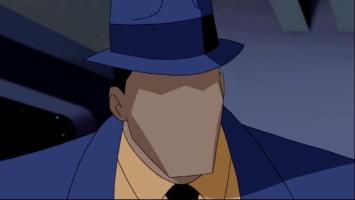
Another obvious choice for a guest starring role would be The Question, voiced by character actor Jeffrey Combs, as he was an incredibly popular supporting character in JLU (Bruce Timm once joked that he wanted to make him the star of the series after his debut in “Fearful Symmetry”). As a conspiracy theorist and truth-seeker, it would be negligent not to bring him into the mix, especially considering the QAnon / Pizzagate / flat earth / vaccines cause autism world we now live in. His quest for truth could involve investigation into Gotham’s underworld, or it could be part of his ongoing quest against The Illuminati (which, in the comics, is run by Vandal Savage, another reboot possibility). In addition, a team-up with Renee Montoya, harkening back to their partnership in 2006-2007 52 series, would be nice, although I’m in no hurry for Vic Sage to pass the faceless mask onto another.
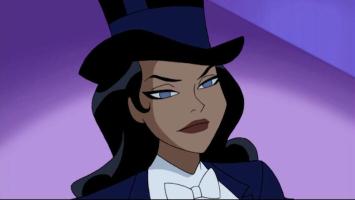 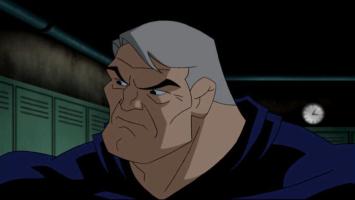
Other potential returning cast could include Zatanna, a favorite of Paul Dini, who appeared frequently in Dini’s Detective Comics (2006-2009) and Batman: Streets of Gotham (2009-2011) runs (as well as her own Dini-penned 2010-2011 series). Another candidate could be Wildcat, whose gym is located in Gotham. A professional boxer and skilled in multiple forms of combat, the veteran hero was pivotal in training Black Canary, Catwoman, and Batman himself.
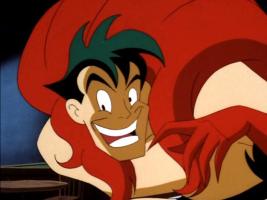
On a final note, there is always the issue of The Creeper, voiced by Jeff Bennett. While not as high a priority as the others on this list, he definitely would be a possibility for the reboot. I have this mad idea that, in between Justice League missions, he continues to seek out the Joker for revenge, only to end up getting a piano or a safe dropped on him, Looney Tunes-style, only to survive and come back for more, much like the Joker himself. Aside from that, his alter ego Jack Ryder could return as a reporter for the series, and we could get a team-up with fellow Steve Ditko creation The Question.
***
Aside from the above, I would welcome the returns of Dr. Leslie Thompkins (voiced by Diana Muldaur) and Wayne Enterprises Manager Lucius Fox (voiced by the late Brock Peters). The former is a classic Batman character who—sadly—hasn’t appeared post-BTAS, and the latter would be particularly interesting, considering his elevated profile following Nolan’s The Dark Knight trilogy. Reporter Summer Gleeson (voiced by Mari Devon) and socialite Veronica Vreeland (voiced by Marilu Henner) would be welcome as well.
While the Dark Knight would be the primary focus of the series, he cannot exist in a vacuum. Even the strongest character requires a supporting cast of equal measure, and I think that the above would make a great start.
Click here to discuss this editorial!
Want more? Click here for "Part 1" and click here for "Part 2!"
Joseph Davis is a regular contributor to the community, having run the Justice League Watchtower website and posting on WF forums under the name "Karkull."
Follow The World's Finest on
YouTube - Twitter - Facebook
 |